וּסְפַרְתֶּם לָכֶם מִמָּחֳרַת הַשַּׁבָּת, מִיּוֹם הֲבִיאֲכֶם אֶת־עֹמֶר הַתְּנוּפָה; שֶׁבַע שַׁבָּתוֹת תְּמִימֹת תִּהְיֶינָה
And you shall count for yourselves from the morrow after the day of rest, from the day that you brought the omer of the wave offering; seven complete weeks shall there be.
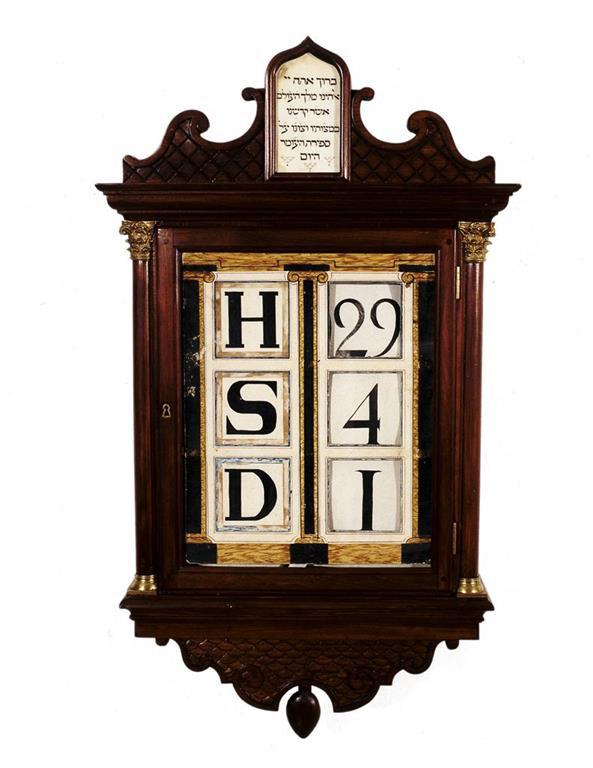
Dutch-Portuguese-style 3-row Omer Counter. H is Portuguese for homer (omer); S for semanas, “weeks,” and D for dios, “day.” See more of this kind of counter here and here.
Previously, I wrote about the concept of hiddur mitzvah, incorporating physical beautify into ritual observance. We are now in the midst of an oft-overlooked and unappreciated ritual, but one that has great artistic potential: Sefirat Ha-Omer, the Counting of the Omer. We commemorate the lead up to the giving of the Torah at Mount Sinai by counting the 49 days from the second night of Passover to Shavuot. We no longer bring the Omer barley offering at the Temple in Jerusalem; instead, the liturgy includes a simple statement every day of what number day it is and how many weeks it’s been thus far. “Today is the forty-seventh day of the Omer, which is six weeks and five days of the Omer.” Thrilling, right? This year, I decided to liven things up a bit with typography.
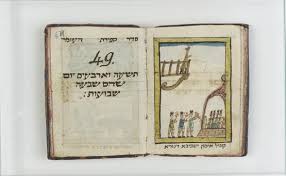
Illustrated Omer counting book by Isaac ben Mehalalel, Italy, 1802-1804. Via
Omer counters have been a small but constant presence in Judaica for generations. To help people remember to count, and to eliminate the need to do math in calculating the number of weeks elapsed, Jews published Omer counters as posters to be hung in the synagogue and home. Many used Jewish handcrafts like papercutting, and some combined this function with other applications like shivitis and mizrach plaques pointing east. These richly decorated pieces seem to have largely died out after artistic tastes changed in the early decades of the 20th century. Omer counting books, often created by hand, were also used in the 18th and 19th centuries.
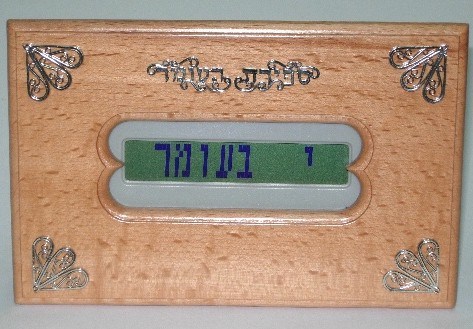
Digital version of scrolling Omer counter. I’ll keep my aesthetic judgement to myself. Via
A common construction today is the scrolling olive wood Omer counter, a popular souvenir from craftsmen in Israel, which has its roots in decorated scrolling counters of the 19th century and earlier. I got one for my bar mitzvah that I may have used once or twice. The advantage of this model is it’s more helpful in keeping track of what day it is, unless, of course, you miss a day. Traditionally, a blessing is made before counting each evening (the Jewish day starts at sunset, as opposed to the common day that starts at midnight) but is no longer appended to the counting if one has missed a day. Despite encouragement by rabbis to continue counting despite a blip, most people I know simply give up at that point. How do we add interest to this ritual, as well as make it easier—and more fun—to complete?
 ’ve long been a fan of letterer extraordinaire Jessica Hische. For quite a while, she dutifully posted an illustrated capital letter each day as part of her Daily Drop Cap exercise. (That’s her work at the beginning of this paragraph.) It functioned for her as a way to introduce a bit of creativity into her day and get an opportunity to loosen up before work. Since then,1 designers and artists worldwide have taken on “Daily Type” projects to illustrate the alphabet a letter a day for a month. These are merely a subset of daily drawing and creation projects in typography,2 animation, illustration, and photography. Participants rave about their newfound discipline, the gratification of completion, and their improved skills as a result of spending time each day to work on something. I’d been thinking of doing a daily project of some kind for a while. When I stumbled on 365daysoftype I knew I had to try this for the Omer.
’ve long been a fan of letterer extraordinaire Jessica Hische. For quite a while, she dutifully posted an illustrated capital letter each day as part of her Daily Drop Cap exercise. (That’s her work at the beginning of this paragraph.) It functioned for her as a way to introduce a bit of creativity into her day and get an opportunity to loosen up before work. Since then,1 designers and artists worldwide have taken on “Daily Type” projects to illustrate the alphabet a letter a day for a month. These are merely a subset of daily drawing and creation projects in typography,2 animation, illustration, and photography. Participants rave about their newfound discipline, the gratification of completion, and their improved skills as a result of spending time each day to work on something. I’d been thinking of doing a daily project of some kind for a while. When I stumbled on 365daysoftype I knew I had to try this for the Omer.
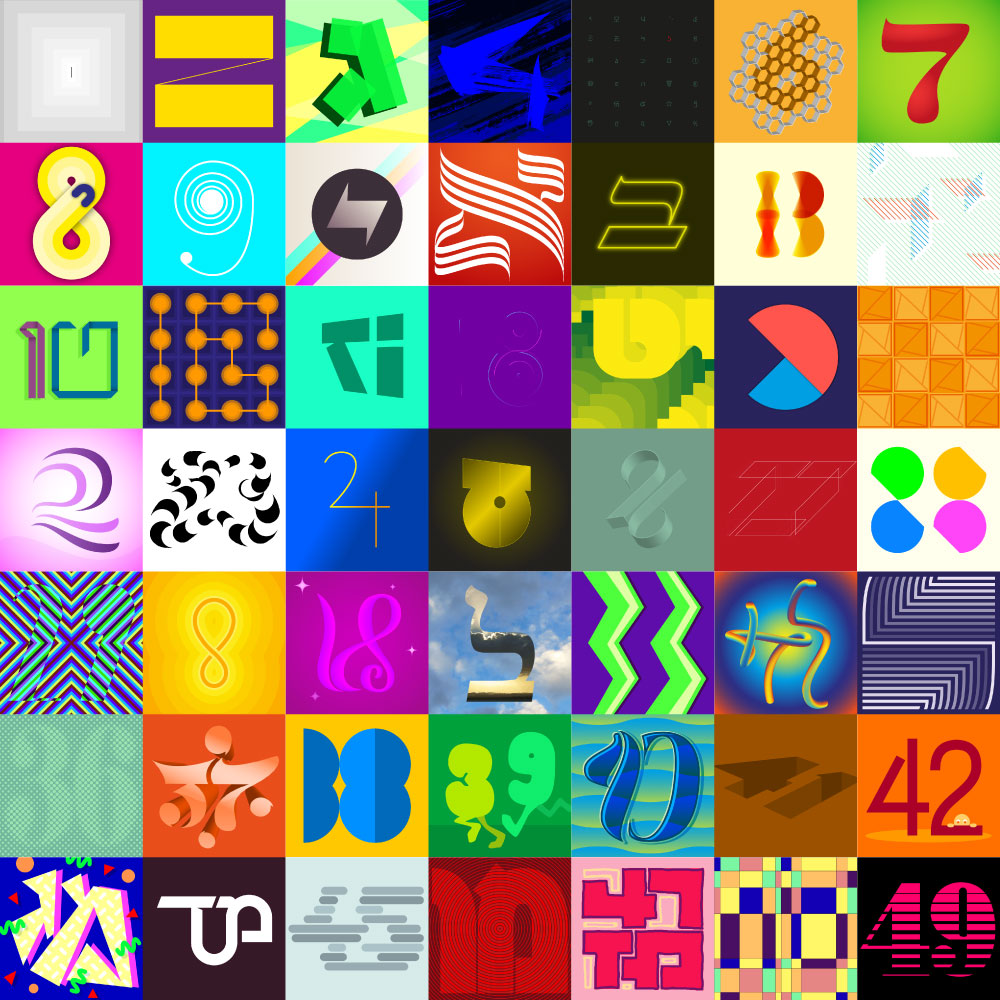
Update: The full set of my daily typographic Omer numbers. See them all animated at http://bestomerever.tumblr.com, and sign up up for daily email delivery.

Omer number for 45, morphing into the Hebrew מה
Starting Erev Pesach, I drew a simple 1 with radiating lines. I couldn’t decide how I wanted the lines to look so I thought, what if I keep both ways and animate them together? I hadn’t done any animating myself since college (though I’ve done a bunch of graphics for ShootEast that were animated by others) and thought this could be a fun way to brush up on those skills.
I drew a new animated number each day, sometimes in familiar Hindu-Arabic numerals, sometimes in Hebrew alpha-numerals. My favorites are the ones that transform from one language to the other. And every day I had doubts as to how long I’d manage to keep it up. One week? Two? Here we are and I’m still going strong. I noticed that I’m paying more attention each day to the passage of time and the performance of this time-based ritual. I spend time each day focused on marking that day with something unique and beautiful. I still managed to miss a few days of ritual verbal counting here and there, but I don’t recall ever getting this far before, and surely never continued to count this long after missing a day.
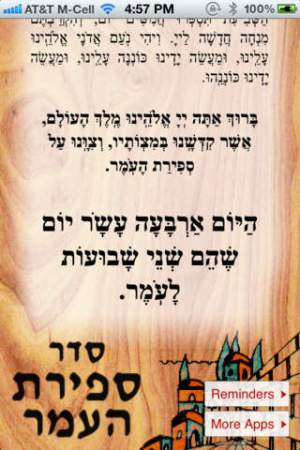
RustyBrick’s Omer app, clearly referencing olive wood counters (it even has the same illustration).
Internet technology is fundamentally changing the way we practice Judaism. I already knew of Omer counting apps and email reminders, and found that a whole slew of people were counting the Omer on Twitter. The Homer Calendar and Counting the Omar are the punniest ones online. That inspired me to offer my counter as an email-reminder service as well, after some enthusiastic requests, which you can sign up for here.
I discovered that many more artists than I’d thought had taken on daily art projects for the Omer. Jacqueline Nicholls completed touching series of drawings in 2012 and 2013 dealing with loss and the things we carry with us. Dekel J. Maimon was even doing a daily typographic Omer too!
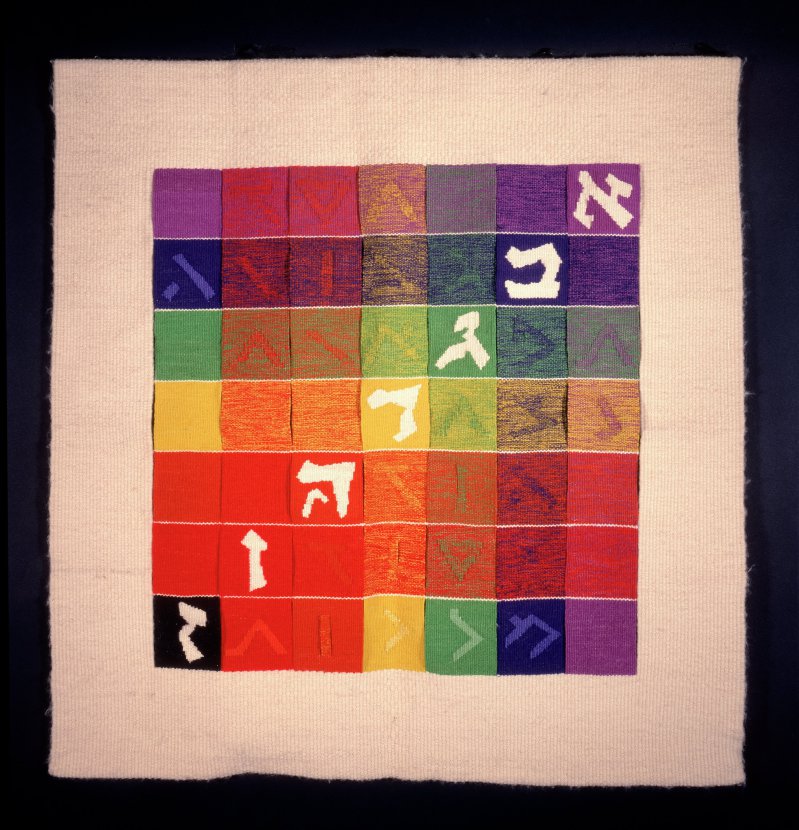
Omer Calendar by Georges Goldstein, 1984. Via
Other artists who’ve tackled the physical Omer counter genre in interesting but practical ways include Michael Kupietzky, Studio Gruss, and Arnold Schwarzbart. Some artists, like Georges Goldstein and David Moss, incorporate some of the mystical teachings of the Omer into their counters using shape and color. Namma Kitov’s clean design style still looks fresh over half a century later.
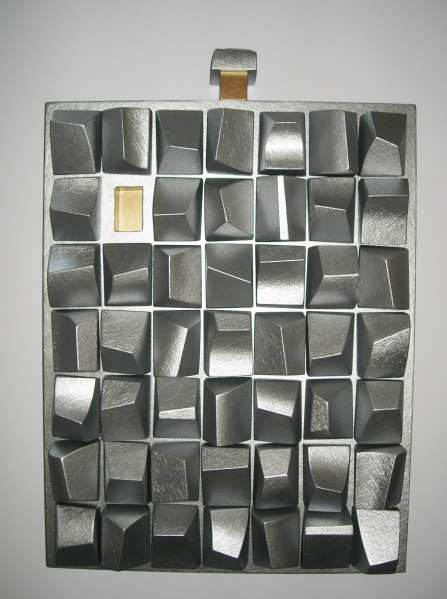
Tobi Kahn’s Omer counter. Via
Taking a more conceptual approach, LA-based Doni Silver Simons is known for her drawings and paintings using mark-making as a way to track time. Says Doni, “I am simply making a mark… Every step of the way is important and is of no importance at all.” For her, this is about presence and mindfulness. “I want to inhabit the mark. I want to inhabit the moment. If you are marking time, you are noticing that you’re here and noticing that image will be marking time.” In a departure from previous linear Omer counters, in 2009 she created an Omer 5769 installation that invited participants to experience the passing of time with her. “Each day is a prayer,” says Tobi Kahn, with a similar intention behind his work. “We count, we measure: birthdays, anniversaries, other markers. Time helps us be grateful.”
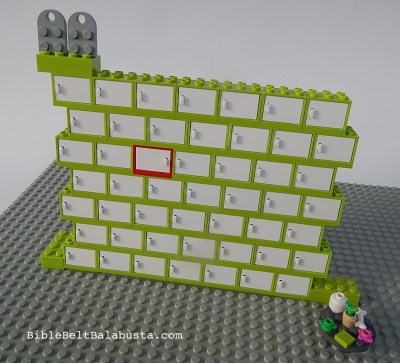
Lego Omer Counter from Bible Belt Balabusta
Via Google and Pinterest, I discovered a wealth of DIYers and craft aficionados coming up inventive counters of their own, many of them based on other traditional counters like Advent calendars. What’s great is that these can be tailored to kids to get them excited about this ritual. Do try your hand at an Omer counter of your own next year and send it over!
I’d also encourage you to try a daily project of your own to challenge yourself and hopefully grow in the process. The public aspect of challenges like 36daysoftype (which I discovered a few weeks into the Omer when they were already coincidentally on numbers) is great for staying inspired and energized. 22hebrewletters is doing the same for the Hebrew alphabet, though weekly instead of daily, and is currently ongoing. Why not start today?
Update: I wanted to add more fun Omer counters to this list. Josh Rosenberg designed a genius DIY Omer counter using bubble wrap. Make your own with the template available here. Jo Kamm’s Moorish art-inspired laser-cut Omer counter is a sight to behold.
Lastly, my own Omer counter was used on the cover of a new book called Counting the Days: Growing your Family’s Spirit by Counting the Omer by Lea Gavrieli. Pretty nifty!
And again, you can sign up for daily email delivery of my Omer counter here.
Notes
| ⇧1 | Or, at least, I noticed it starting then. |
| ⇧2 | Shout out to the hilarious Draw Shit Every Day |
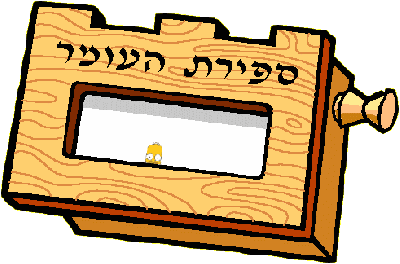
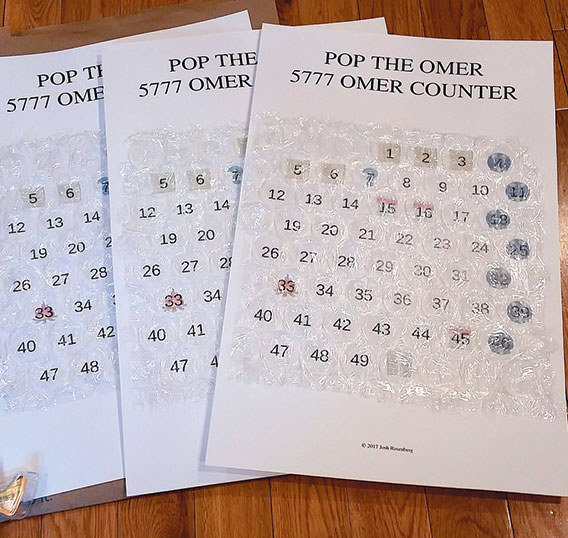

Inspirational. A great au to keep track for us who are visual inclined.